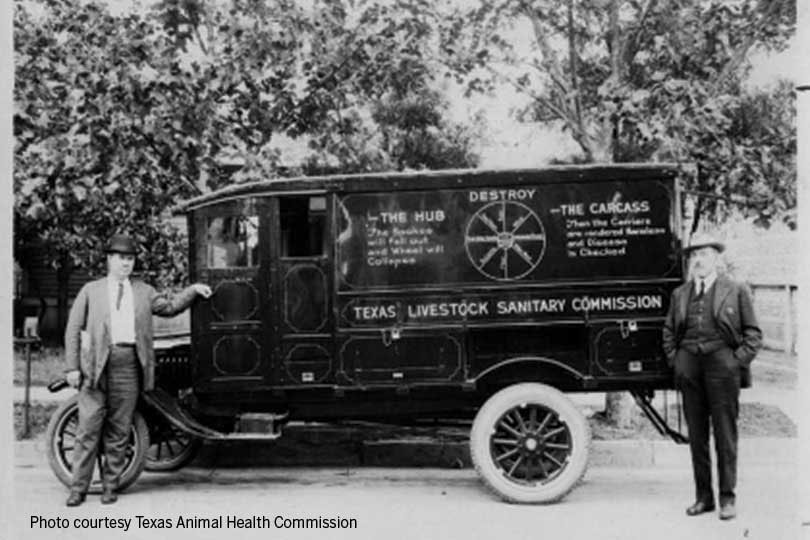Texas Animal Health Commission (TAHC) has reached an historic milestone as the agency celebrates 125 years of service to Texas animal agriculture.
TAHC was established April 20, 1893 as the Texas Livestock Sanitary Commission and charged with protecting the state’s domestic animals “from all contagious or infectious diseases of a malignant character.”
“Through the years, TAHC has remained true to its charge, while evolving with the times to protect the health and marketability of all Texas livestock and poultry,” Dr. Andy Schwartz, TAHC executive director, said. “We are excited to celebrate this milestone anniversary and reflect on TAHC’s historic past.”
Governor James Hogg gave the agency its start when he appointed three commissioners to oversee the agency and its $20,000 two-year budget. The commissioners were authorized to hire a veterinarian, provided no more than $10 a day or $900 a year was spent on the salary.
TAHC was small, but the agency’s efforts were mighty.
The agency immediately started cattle fever tick eradication efforts by establishing state quarantine lines, rules and regulations and creating penalties for violators. Texas was not the only state fighting the pest. Twelve other states were plagued by the fever tick and partnered with TAHC and the U.S. Department of Agriculture (USDA) to push this pest back to Mexico. Texas serves as the United States’ defensive line and constantly battles resurgence of fever ticks due to the state’s extensive border with Mexico.
TAHC’s work did not stop at cattle fever ticks. By 1917, a national cooperative effort to eradicate bovine tuberculosis was underway. In 1924, foot-and-mouth disease was confirmed in cattle south of Houston and eradicated in one year.
In the years to follow, TAHC and USDA collaborated to eradicate the endemic screwworm from the Texas landscape, fight the last case of classical swine fever and reduce the number of positive equine infectious anemia cases in Texas from 750 in 1997 to 25 in 2017.
The agency lead the charge to victory in some hard fought battles during the 2000s, gaining free status recognition from USDA for cattle brucellosis and tuberculosis and in commercial swine brucellosis and pseudorabies.
“Our success would not be possible without the support and partnership of Texas producers, agriculture industries and organizations,” Coleman Locke, TAHC chairman, said. “Combating disease and ensuring the health and marketability of Texas livestock and poultry is a community effort, and I want to extend my sincere appreciation to our diverse animal agriculture partners and leaders.”
As agricultural practices and technology evolve, TAHC will continue to invest in disease, control and eradication programs that promote the health and marketability of Texas livestock and poultry.
“This investment not only advances animal health but also serves to protect Texans from zoonotic diseases,” Schwartz said. “TAHC is committed to maintaining strong partnerships to ensure that today’s challenges are tomorrow’s accomplishments.”
TAHC will celebrate the 125th anniversary at its regularly scheduled commission meeting April 17 at the Texas Capitol.
Source: Texas Animal Health Commission

